
Discover the Enchanting Depths of Saklikent Gorge
Explore the breathtaking Saklikent Gorge in Turkey, a hidden gem offering stunning natural beauty, thrilling adventures, and a refreshing escape in the mountains.
Nestled in the mountains of southwestern Turkey, Saklikent Gorge is a natural wonder that captivates every visitor. The gorge, which means 'Hidden City' in Turkish, stretches for 18 kilometers and is one of the deepest canyons in the country. Here, you can experience the raw beauty of nature as you walk along wooden walkways suspended over the rushing waters of the Karaçay River. As you venture deeper into the gorge, you'll be surrounded by towering limestone walls that rise up to 300 meters. The cool, shady environment provides a refreshing escape from the summer heat, making it an ideal spot for a day trip. The crystal-clear waters, lush vegetation, and unique rock formations create a serene atmosphere that's perfect for photography, hiking, and simply soaking in the natural beauty. Aside from its stunning scenery, Saklikent Gorge offers thrilling activities for adventure seekers. You can try river tubing or rafting down the fast-flowing waters, or if you're feeling brave, wade through the icy waters at the narrowest point of the gorge. After a day of exploration, relax at one of the riverside cafes and enjoy traditional Turkish cuisine while listening to the soothing sounds of the river.
Local tips in Saklikent Gorge
- Wear sturdy, waterproof shoes as the terrain can be uneven and slippery.
- Visit early in the morning to avoid crowds and enjoy a more peaceful experience.
- Bring a waterproof bag for your belongings, especially if you plan to wade through the water.
- Check the weather forecast before your visit; heavy rain can make the gorge inaccessible.
- Try the gözleme (Turkish pancake) at the local cafes for an authentic taste of the region.
Discover the Enchanting Depths of Saklikent Gorge
Nestled in the mountains of southwestern Turkey, Saklikent Gorge is a natural wonder that captivates every visitor. The gorge, which means 'Hidden City' in Turkish, stretches for 18 kilometers and is one of the deepest canyons in the country. Here, you can experience the raw beauty of nature as you walk along wooden walkways suspended over the rushing waters of the Karaçay River. As you venture deeper into the gorge, you'll be surrounded by towering limestone walls that rise up to 300 meters. The cool, shady environment provides a refreshing escape from the summer heat, making it an ideal spot for a day trip. The crystal-clear waters, lush vegetation, and unique rock formations create a serene atmosphere that's perfect for photography, hiking, and simply soaking in the natural beauty. Aside from its stunning scenery, Saklikent Gorge offers thrilling activities for adventure seekers. You can try river tubing or rafting down the fast-flowing waters, or if you're feeling brave, wade through the icy waters at the narrowest point of the gorge. After a day of exploration, relax at one of the riverside cafes and enjoy traditional Turkish cuisine while listening to the soothing sounds of the river.
When is the best time to go to Saklikent Gorge?
Iconic landmarks you can’t miss
Saklikent National Park
Explore the stunning Saklikent National Park, where adventure meets breathtaking natural beauty in the heart of Turkey's Muğla region.

Gizlikent Şelalesi
Experience the enchanting beauty of Gizlikent Şelalesi, a stunning waterfall and dining destination in Muğla, perfect for nature lovers and food enthusiasts alike.

original waterfall Yakapark
Explore the beauty of nature at Original Waterfall Yakapark, a serene oasis in Fethiye known for its stunning waterfall and lush landscapes.

Pinara Antique City
Explore the enchanting ruins and natural beauty of Pinara Antique City, a historical landmark in Turkey's stunning Muğla region.

Saklıkent Restaurant Paradise park
Discover a delightful dining experience at Saklıkent Restaurant Paradise Park, where natural beauty meets delicious cuisine in the heart of Saklıkent Gorge.

Saklıkent Cihan'ın yeri Alkolsüz aile Restoranı & Vitamin bar
Discover Saklıkent Cihan'ın Yeri, an alcohol-free family restaurant in Kaş, offering healthy meals amidst stunning natural beauty.

Saklıkent
Explore Saklıkent Canyon, a stunning natural marvel in Turkey's Muğla province, perfect for outdoor adventures and breathtaking views.

Saklıkent Gorge Club
Explore Saklıkent Gorge Club, where adventure meets tranquility in the breathtaking landscapes of Turkey's Antalya region.

Saklikent kanyonu
Explore the breathtaking Saklikent Canyon in Fethiye, Turkey—an unforgettable hiking adventure awaits amidst stunning natural beauty.

The XanyoN
Experience the tranquility and adventure at The XanyoN, a picturesque campground and park in Fethiye, perfect for nature lovers and outdoor enthusiasts.

Saklı kent Tulay
Explore the breathtaking landscapes of Saklı Kent Tulay, a hidden gem in Muğla, Turkey, perfect for adventurers and nature lovers seeking tranquility.
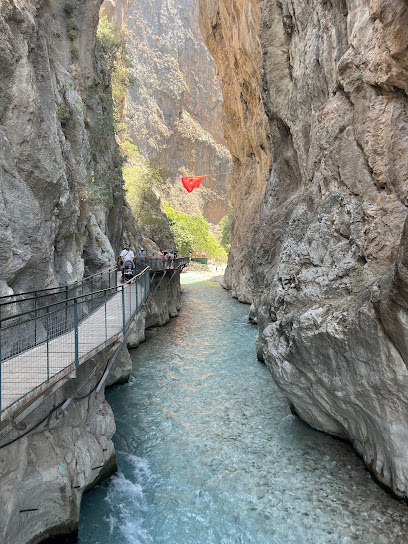
Ölüdeniz, Saklıkent, İztuzu Plajı.
Discover the stunning natural beauty of Ölüdeniz, Saklıkent, and İztuzu Beach – a paradise for adventure seekers and nature lovers in Turkey.

Ardıçlıburun Kabristanı
Explore the serene beauty of Ardıçlıburun Kabristanı, a tranquil cemetery in Antalya that captures the essence of history and nature.

Unmissable attractions to see
Amyntas Rock Tombs
Discover the Amyntas Rock Tombs, an ancient Lycian marvel carved into cliffs, offering breathtaking views and a glimpse into rich historical heritage.

YakaPark
Discover YakaPark in Seydikemer, where nature meets delightful dining experiences amidst stunning landscapes.

Karmylassos ruins
Discover the captivating Karmylassos ruins in Kayaköy, a historical landmark that offers a unique glimpse into ancient Lycian civilization amid stunning landscapes.

Setur Kaş Marina
Experience the beauty and vibrancy of Setur Kaş Marina, where stunning views meet exceptional dining and unforgettable Mediterranean adventures.

Kabak Koyu
Discover Kabak Koyu, a serene bay in Fethiye, Turkey, where stunning natural beauty meets adventure and relaxation in perfect harmony.

Letoon Sanctuary Place
Explore the enchanting Letoon Sanctuary, an ancient religious site in Turkey, rich with history, stunning ruins, and breathtaking landscapes.

Calis Beach Bird Sanctuary
Experience the tranquility of Calis Beach Bird Sanctuary, a perfect blend of nature and serenity in Fethiye, Turkey.

Bermuda Boat Daily Boat Trips
Discover the stunning beauty of Kaş with Bermuda Boat Daily Boat Trips, offering unforgettable journeys through crystal-clear waters and pristine coastal scenery.

Akvaryum koyu
Explore the stunning turquoise waters and serene landscapes of Akvaryum Koyu, a hidden gem in Fethiye, Turkey, perfect for relaxation and adventure.

Aktur Lunapark
Discover the thrilling rides and vibrant atmosphere of Aktur Lunapark, a must-visit amusement park in Ölüdeniz, Turkey.

Orka World Waterpark
Discover the ultimate aquatic adventure at Orka World Waterpark in Ölüdeniz, where thrills and relaxation meet in a stunning tropical setting.

Ancient City of Telmessos
Explore the Ancient City of Telmessos in Fethiye, Turkey, where history comes alive amidst stunning rock tombs and breathtaking landscapes.

Af Tower
Discover the rich history and breathtaking views at Af Tower in Kayaköy, a perfect blend of adventure and culture in Turkey.
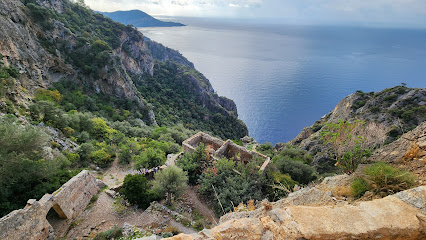
Lycian Way Trail
Discover the breathtaking Lycian Way Trail, a hiker's dream featuring stunning landscapes, ancient ruins, and rich cultural experiences on Turkey's southwestern coast.
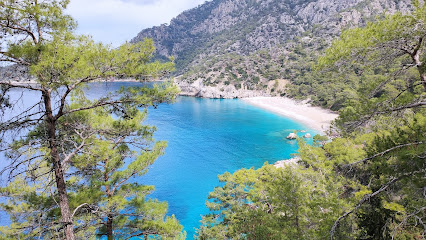
Montana Seyir Tepesi
Experience stunning panoramic views of the Aegean Sea at Montana Seyir Tepesi, a top tourist attraction in Ölüdeniz, Turkey, perfect for hiking and photography.

Essential places to dine
Pembe Piknik
Experience authentic Turkish cuisine amidst breathtaking views at Pembe Piknik in Saklikent National Park.

Saklıkent Restaurant Paradise park
Experience delicious Turkish cuisine amidst stunning natural landscapes at Saklıkent Restaurant Paradise Park.

Saklıkent Cihan'ın yeri Alkolsüz aile Restoranı & Vitamin bar
Discover Saklıkent Cihan'ın Yeri: A delightful alcohol-free family restaurant in Kaş offering fresh local cuisine and stunning natural views.

Kayıp Cennet Restaurant Saklıkent / Muhtarın Yeri
Discover Kayıp Cennet Restaurant: An exquisite dining experience near Saklıkent Gorge, blending local flavors with stunning natural beauty.
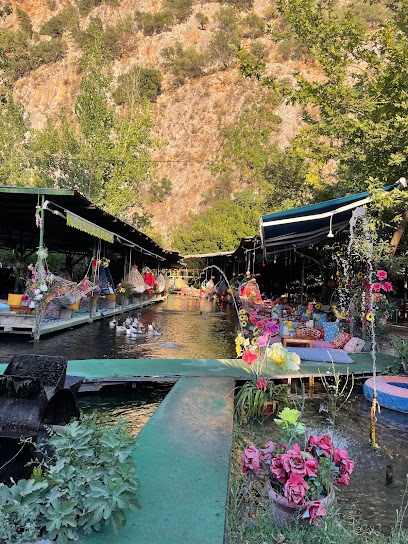
Fesleğen Gözleme Evi
Discover authentic Turkish gözleme at Fesleğen Gözleme Evi in Fethiye – where tradition meets flavor in a picturesque setting.

Esma Ananın Yeri
Experience authentic Turkish breakfast at Esma Ananın Yeri in Kadıköy – where tradition meets flavor in every bite.

Saklıkent Restaurant Natural Paradise Karadenizli'nin Yeri
Discover culinary delights amidst stunning natural beauty at Saklıkent Restaurant in Muğla's breathtaking Saklıkent Gorge.

Markets, malls and hidden boutiques
Saklikent Gorge
Experience the breathtaking beauty of Saklikent Gorge, a natural wonder in Muğla, perfect for adventure seekers and nature lovers.

Koyuncu Ticaret Kadıköy
Explore Seydikemer with convenience at Koyuncu Ticaret Kadıköy, your go-to spot for local snacks and essentials.
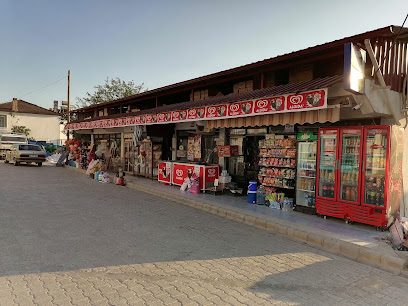
A101 Eşen Mağazası
Discover the charm of Turkish shopping at A101 Eşen Mağazası in Fethiye, where local culture meets convenience in a vibrant shopping experience.

Saklıkent UÇAR Çadır Kamp Yeri ve Market
Experience the perfect blend of convenience and nature at Saklıkent UÇAR Çadır Kamp Yeri ve Market in Turkey's stunning Saklıkent National Park.

FETHİYE Art Gallery /Sanatra Verka coffee & Antique Art Gallery & Bazaar / sanatra sanat galerisi /sanat müze
Explore the Fethiye Art Gallery, a captivating blend of art, antiques, and coffee culture in the heart of Turkey's stunning landscape.
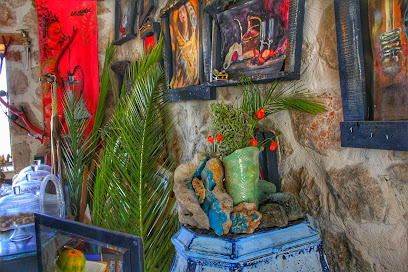
Can Market
Discover the essence of Fethiye at Can Market, where local flavors and vibrant culture come together in a delightful grocery shopping experience.

Güneşli
Experience the local flavors of Muğla at Güneşli, a charming grocery store offering fresh produce and artisanal delights.

Yılmazlar Market
Discover Yılmazlar Market in Fethiye: A local supermarket offering fresh produce, authentic Turkish snacks, and a welcoming atmosphere for all travelers.

Tekeler Market
Explore the flavors of Turkey at Tekeler Market, a local grocery store in Çobanlar offering fresh produce and artisanal goods.

Özkan Market
Explore Muğla's vibrant Özkan Market for fresh produce, local delicacies, and a glimpse of authentic Turkish culture.

Durgut Market (SEYDİKEMER-EŞEN MARKET) ve ÇOBANOĞLU AV BAYİ
Experience local culture and authentic Turkish goods at Durgut Market in Eşen, Fethiye—a delightful shopping destination for every traveler.

Uçarlar (Dede) Börek Gözleme
Experience authentic Turkish gözleme at Uçarlar (Dede) Börek Gözleme in Kayadibi, a culinary treasure in Muğla offering delicious flavors and warm hospitality.

Çarıkcı Market
Explore the flavors of Yakaköy at Çarıkcı Market, a vibrant grocery store offering local produce, artisanal goods, and a taste of Turkish culture.

Doğadan Yöresel Köy Ürünleri
Discover the flavors of Seydikemer at Doğadan Yöresel Köy Ürünleri, where local produce meets sustainable practices in a charming setting.

Saklıkent Fish Therapy
Discover rejuvenation and relaxation at Saklıkent Fish Therapy, nestled in the stunning landscapes of Fethiye, Muğla.

Essential bars & hidden hideouts
Deep Blue Bar
Experience the vibrant nightlife at Deep Blue Bar in Fethiye, where delightful drinks and a friendly atmosphere create unforgettable memories.

Saklıkent Restaurant Paradise park
Experience the perfect blend of nature and culinary delight at Saklıkent Restaurant Paradise Park, a must-visit destination in Fethiye.

Saklıkent Cihan'ın yeri Alkolsüz aile Restoranı & Vitamin bar
Discover Saklıkent Cihan'ın Yeri, an alcohol-free family restaurant in Antalya, offering delicious local dishes and healthy vitamin drinks amidst stunning nature.

Attic Lounge Cocktail Bar
Discover the charm of Attic Lounge Cocktail Bar in Ölüdeniz, offering exquisite cocktails and a cozy atmosphere for unforgettable evenings.

Efes Garden Pub
Discover the vibrant Efes Garden Pub in Ölüdeniz, where delicious food and refreshing drinks meet a lively social atmosphere.

Tiki Roof Top Bar & Restaurant - Ölüdeniz
Discover breathtaking views and delightful flavors at Tiki Roof Top Bar & Restaurant in Ölüdeniz, the perfect spot for sunset lovers.

Saklıkent Restaurant Natural Paradise Karadenizli'nin Yeri
Experience the flavors of Turkey at Saklıkent Restaurant, surrounded by the stunning beauty of nature in Seydikemer.

Saklımavi kent Çadır Kamp Alanı, Çamur Banyosu, Restaurant
Explore the serene beauty of Saklımavi Kent, where culinary delights meet outdoor adventures in the heart of Fethiye.

Ocean Blue Bar@ Calis Beach
Experience the vibrant atmosphere and stunning coastal views at Ocean Blue Bar, the perfect seaside retreat in Calis Beach.

TONIC BAR & KITCHEN
Discover Tonic Bar & Kitchen in Ölüdeniz, a vibrant spot for delicious food and refreshing drinks, perfect for unwinding after exploring the beautiful surroundings.
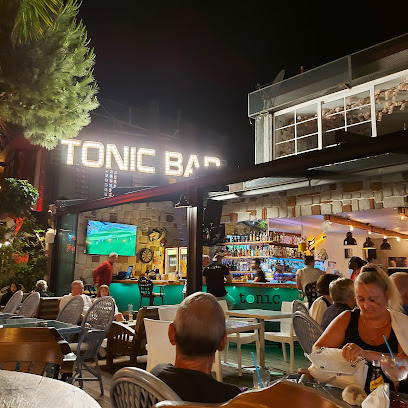
Uygar Restaurant / Motel - Saklıkent
Experience family-friendly dining and cozy accommodations at Uygar Restaurant & Motel, your perfect getaway in the stunning Saklıkent region.
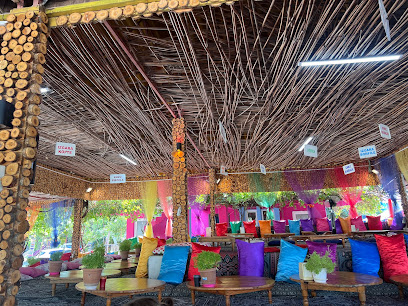
Uçarsu Restaurant
Savor the flavors of traditional Turkish cuisine at Uçarsu Restaurant in Fethiye, where stunning views meet delicious meals.

Bitters Karaoke And Cocktail Bar
Experience the best karaoke and cocktails in Ölüdeniz at Bitters Karaoke And Cocktail Bar, where every night is an unforgettable celebration.

Ozkanlar Gozleme, Kahvalti ve Izgara
Experience the essence of Turkish cuisine at Ozkanlar Gozleme, where traditional flavors meet a cozy atmosphere in the heart of Fethiye.

Cengiz's Bar
Discover the vibrant atmosphere and stunning views at Cengiz's Bar in Ölüdeniz, the perfect spot for relaxation and entertainment.

Local Phrases about Saklikent Gorge
-
- HelloMerhaba
[mer-ha-ba] - GoodbyeHoşça kal
[hosh-cha kal] - YesEvet
[e-vet] - NoHayır
[ha-yir] - Please/You're welcomeLütfen
[lutfen] - Thank youTeşekkür ederim
[te-shek-kur e-de-rim] - Excuse me/SorryÖzür dilerim
[o-zur di-le-rim] - How are you?Nasılsınız?
[na-sil-si-niz] - Fine. And you?İyiyim. Peki sen?
[i-yi-yim. pe-ki sen] - Do you speak English?İngilizce konuşuyor musunuz?
[in-gi-liz-ce ko-nu-su-yor mu-su-nuz] - I don't understandAnlamıyorum
[an-la-mi-yo-rum]
- HelloMerhaba
-
- I'd like to see the menu, pleaseMenüyü görmek istiyorum, lütfen
[me-nu-yu gur-mek is-ti-yo-rum, lutfen] - I don't eat meatEt yemem
[et ye-mem] - Cheers!Şerefe!
[she-re-fe] - I would like to pay, pleaseÖdemek istiyorum, lütfen
[o-de-mek is-ti-yo-rum, lutfen]
- I'd like to see the menu, pleaseMenüyü görmek istiyorum, lütfen
-
- Help!Yardım!
[yar-dum] - Go away!Uzaklaş!
[u-zak-laş] - Call the Police!Polisi arayın!
[po-li-si a-ra-yin] - Call a doctor!Doktor çağırın!
[dok-tor cha-ir-in] - I'm lostKayboldum
[kay-bol-dum] - I'm illHastayım
[has-ta-yum]
- Help!Yardım!
-
- I'd like to buy...Satın almak istiyorum...
[sa-tin al-mak is-ti-yo-rum] - I'm just lookingSadece bakıyorum
[sa-de-ce ba-ku-yo-rum] - How much is it?Ne kadar?
[ne ka-dar] - That's too expensiveBu çok pahalı
[bu chok pa-ha-lu] - Can you lower the price?Fiyatı düşürebilir misiniz?
[fi-ya-tu du-shu-re-bi-lir mi-si-niz]
- I'd like to buy...Satın almak istiyorum...
-
- What time is it?Saat kaç?
[sa-at kach] - It's one o'clockSaat bir
[sa-at bir] - Half past (10)On buçuk
[on bu-chuk] - MorningSabah
[sa-bah] - AfternoonÖğleden sonra
[o-le-den af-te-ran] - EveningAkşam
[ak-sham] - YesterdayDün
[dun] - TodayBugün
[bu-gun] - TomorrowYarın
[ya-rin] - 1Bir
[bir] - 2İki
[i-ki] - 3Üç
[uch] - 4Dört
[dort] - 5Beş
[besh] - 6Altı
[al-tuh] - 7Yedi
[ye-di] - 8Sekiz
[se-kiz] - 9Dokuz
[do-kuz] - 10On
[on]
- What time is it?Saat kaç?
-
- Where's a/the...?...nerede?
[ne-re-de] - What's the address?Adres ne?
[a-dres ne] - Can you show me (on the map)?(haritada) gösterebilir misiniz?
[gus-te-re-bi-lir mi-si-niz] - When's the next (bus)?Bir sonraki (otobüs) ne zaman?
[bir son-ra-ki (o-to-bus) ne za-man] - A ticket (to ....)Bir bilet (....'ya)
[bir bi-let ('ya)]
- Where's a/the...?...nerede?
History of Saklikent Gorge
-
Saklikent Gorge, one of the deepest canyons in Turkey, was formed through the erosive power of water over thousands of years. The Karaçay River, a tributary of the Eşen River, carved its way through the limestone rocks, creating a stunning natural feature approximately 18 kilometers long and reaching depths of up to 300 meters in some areas. The gorge's name, 'Saklikent,' translates to 'hidden city,' aptly reflecting its secluded and mysterious nature.
-
The region surrounding Saklikent Gorge was once part of the ancient Lycian civilization, which thrived from around the 15th century BCE to the 6th century CE. The Lycians were known for their unique language, maritime prowess, and distinctive rock-cut tombs. Although there are no direct archaeological sites within the gorge itself, the nearby ancient cities of Tlos and Xanthos provide a glimpse into the rich Lycian heritage of the area.
-
During the Roman period, the Lycian League, a confederation of city-states in the region, came under Roman control in the 1st century BCE. The Romans left a lasting impact on the region, constructing roads, aqueducts, and other infrastructure that facilitated trade and movement. The remnants of Roman engineering and architecture can still be seen in nearby ancient cities, contributing to the historical tapestry of the Saklikent area.
-
Following the fall of the Western Roman Empire, the region became part of the Byzantine Empire. During this period, Christianity spread throughout Lycia, and many ancient cities were transformed with the construction of churches and monasteries. The Byzantine influence is evident in the ruins scattered around the region, providing insight into the religious and cultural shifts that occurred over the centuries.
-
With the rise of the Ottoman Empire in the 14th century, the region encompassing Saklikent Gorge became part of the vast Ottoman territories. The Ottomans integrated the diverse cultural and historical heritage of the area into their empire. While the gorge remained relatively untouched, the influence of Ottoman administration and culture shaped the broader region's development, leaving a legacy that can still be observed today.
-
Saklikent Gorge remained relatively unknown to the outside world until its 'discovery' by a local shepherd in 1988. Since then, it has been developed into a popular tourist destination, attracting visitors from around the globe. The gorge's accessibility and natural beauty have made it a significant site for eco-tourism, adventure activities, and cultural exploration, contributing to the local economy and raising awareness of the area's historical significance.
Saklikent Gorge Essentials
-
Saklikent Gorge is located in the Mugla Province of southwestern Turkiye. The nearest major airport is Dalaman Airport, approximately 100 kilometers away. From Dalaman, you can rent a car or take a shuttle bus to Fethiye, which is the closest large town to Saklikent Gorge. From Fethiye, you can take a bus or a taxi to the gorge, which is about 50 kilometers away. Alternatively, you can book a guided tour that includes transportation from Fethiye or other nearby cities.
-
The most convenient way to get around the area is by renting a car, which allows you the flexibility to explore at your own pace. Local buses also operate between Fethiye and Saklikent Gorge, but they can be less frequent, especially during the off-peak season. Taxis are available but can be relatively expensive if you plan to make multiple trips. If you prefer a guided experience, several tour companies offer day trips to the gorge, which include transportation and a guided tour.
-
The official currency in Turkiye is the Turkish Lira (TRY). Credit cards are widely accepted in hotels, restaurants, and larger shops, but it is advisable to carry some cash for small purchases, especially in rural areas and local markets. ATMs are available in Fethiye and other nearby towns, so you can withdraw cash as needed. It's a good idea to have some local currency on hand before you arrive at Saklikent Gorge, as there are limited facilities to exchange money in the immediate vicinity.
-
Saklikent Gorge is generally a safe destination for tourists. However, it is important to take standard precautions, such as keeping an eye on your belongings and avoiding isolated areas after dark. Petty crimes like pickpocketing are rare but can occur in crowded places, so stay vigilant. The gorge itself can be slippery and challenging to navigate, especially after rain, so wear appropriate footwear and be cautious while exploring. There are no specific high-crime areas targeting tourists near Saklikent Gorge.
-
In case of an emergency, dial 112 for medical assistance, fire, or police services. The nearest medical facilities are located in Fethiye, so it is recommended to have travel insurance that covers medical emergencies. For minor health issues, there are pharmacies in Fethiye where you can purchase over-the-counter medications. If you find yourself in need of assistance within the gorge, there are staff members and guides who can help or direct you to the nearest help point.
-
Fashion: Do wear comfortable and sturdy footwear suitable for hiking and walking through water. Avoid wearing flip-flops or high heels. Religion: Do respect local customs and traditions. Dress modestly when visiting nearby towns or villages. Public Transport: Do be courteous to drivers and fellow passengers. Don't eat or drink on public buses. Greetings: Do greet people with a friendly 'Merhaba' (hello) or 'Günaydın' (good morning). A handshake is a common form of greeting. Eating & Drinking: Do try local delicacies and accept food offerings graciously. Don't refuse hospitality, as it is considered impolite. Always drink bottled water to avoid any stomach issues.
-
To experience Saklikent Gorge like a local, try to visit early in the morning or late in the afternoon to avoid the peak tourist crowds. Bring a waterproof bag for your belongings, as parts of the gorge require wading through water. Consider combining your visit with a trip to the nearby Tlos ancient city or the Yakapark trout farm for a complete day of exploration. Engaging with local guides can provide you with deeper insights into the natural and historical significance of the area.
Trending Landmarks in Saklikent Gorge
-
Saklikent National Park
-
Gizlikent Şelalesi
-
original waterfall Yakapark
-
Pinara Antique City
-
Saklıkent Restaurant Paradise park
-
Saklıkent Cihan'ın yeri Alkolsüz aile Restoranı & Vitamin bar
-
Saklıkent
-
Saklıkent Gorge Club
-
Saklikent kanyonu
-
The XanyoN
-
Saklı kent Tulay
-
Ölüdeniz, Saklıkent, İztuzu Plajı.
-
Ardıçlıburun Kabristanı
Nearby Cities to Saklikent Gorge
-
Things To Do in Rhodes
-
Things To Do in Marmaris
-
Things To Do in Antalya
-
Things To Do in Pamukkale
-
Things To Do in Bodrum
-
Things To Do in Kos
-
Things To Do in Alanya
-
Things To Do in Ephesus
-
Things To Do in Kusadasi
-
Things To Do in Samos
-
Things To Do in Izmir
-
Things To Do in Konya
-
Things To Do in Polis Chrysochous
-
Things To Do in Paphos
-
Things To Do in Kato Paphos







